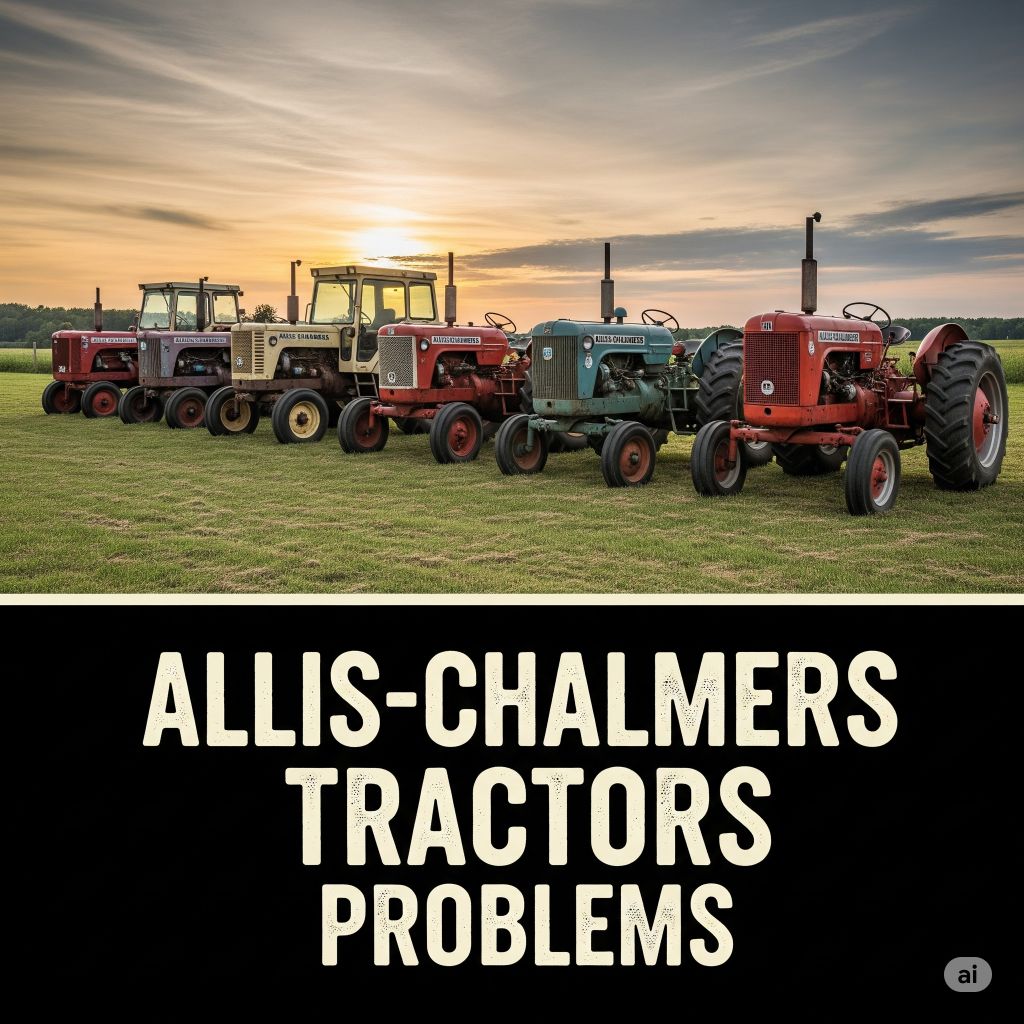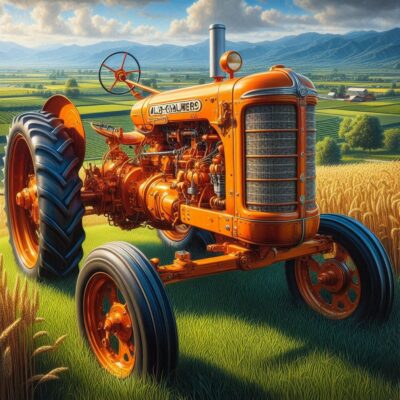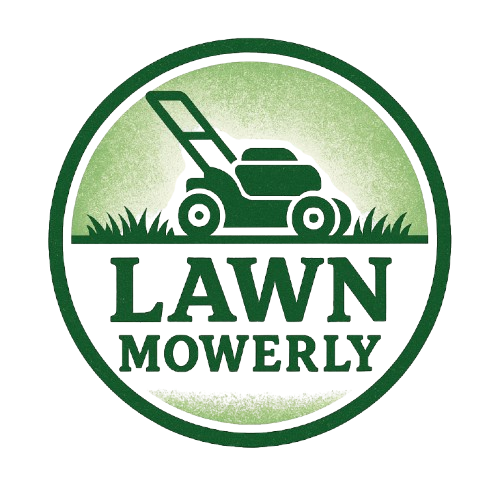
Allis-Chalmers was once a major force in American agricultural machinery, producing tractors from the early 1900s through the 1980s. Though the company is no longer active in the ag sector, its legacy models are still widely used and respected for their rugged construction, simplicity, and innovative design—particularly in vintage and restoration circles.
That said, owning or restoring an Allis-Chalmers tractor often comes with mechanical quirks, parts scarcity, and age-related challenges. This guide offers a series-wise reliability review, common problems, and known fixes to help current and prospective owners.
⚠️ Common Allis-Chalmers Tractor Problems and Fixes

1. Hydraulic System Failure
Symptoms: Slow or no lift, jerky 3-point hitch, weak loader operation
Common Models Affected: WD, D Series, 7000 Series
Causes:
- Worn hydraulic pump
- Leaky control valves or hoses
- Fluid contamination (water or sludge)
Fixes:
- Replace or rebuild hydraulic pump
- Clean/rebuild lift control valves
- Flush system and refill with fresh fluid
- Upgrade seals with modern equivalents
2. Steering Issues (Mechanical & Power Steering)
Symptoms: Excessive play, heavy steering, binding at full turn
Affected Series: D17, 190XT, WD45
Causes:
- Worn steering shaft bushings or ball joints
- Leaking or weak power steering pump
- Gearbox wear
Fixes:
- Replace bushings and ball sockets (still available aftermarket)
- Rebuild or upgrade power steering pump
- Add inline steering assist (for DIY fixes)
3. Electrical System Failures
Symptoms: No start, dead battery, dim lights
Affected Models: Pre-1970 models, especially with original 6V systems
Causes:
- Faulty generator or regulator
- Grounding issues
- Aged wiring insulation
Fixes:
- Convert 6V system to 12V (common and effective mod)
- Replace entire wiring harness with modern replica kits
- Upgrade to alternator for reliability
4. Transmission Gear Popping or Grinding
Symptoms: Gear slips under load, loud shifting, grinding noise
Affected Models: WD, WD45, D14, D15, early D-series
Causes:
- Worn shifter fork or gear teeth
- Synchronizer failure (in later models)
- Low or old transmission oil
Fixes:
- Rebuild transmission (kits still available for many D models)
- Drain and replace oil with GL-4 rated lubricant
- Align linkage and replace worn detents
5. Overheating Issues
Symptoms: Radiator boiling, frequent coolant loss, sluggish performance
Affected Models: D17, 180, 190 Series
Causes:
- Clogged radiator or passages
- Faulty thermostat
- Rust in block or head
Fixes:
- Flush cooling system thoroughly
- Replace thermostat and fan belt
- Use water pump rebuild kit or install electric fan mod
6. Clutch Slipping or Sticking
Symptoms: Poor forward motion, difficulty shifting gears
Common Models: WD, WD45, D-series
Causes:
- Oil-soaked clutch
- Weak springs
- Misadjusted clutch linkage
Fixes:
- Replace clutch disk and pressure plate
- Adjust linkage or pedal free play
- Inspect and fix rear main seal to avoid oil contamination
📘 Allis-Chalmers Tractor Series-Wise Reliability Guide

✅ WC, WF, and B Series (1930s–1940s)
Specs Overview:
- Small, early row-crop tractors
- 4-cylinder gas engines
- Mechanical lift (pre-hydraulic era)
Strengths:
- Simple, durable, parts still available
- Ideal for small acreage and collectors
Known Issues:
- Lack of hydraulics on early WC
- Weak brakes, mechanical steering wear
- Old magneto ignition can fail
Fixes:
- Upgrade to modern ignition coil
- Retrofit with aftermarket hydraulic kits
- Replace steel seat springs and steering arms
Reliability Verdict: ⭐⭐⭐⭐
Excellent vintage tractor for light use and show. Avoid if you need hydraulic or PTO-intensive work.
✅ WD & WD45 Series (1950s)
Specs:
- First AC tractors with power lift and live PTO
- Gas and diesel options
- Snap-Coupler hitch system
Strengths:
- Revolutionary at the time, good parts support
- Simple mechanical design
Known Issues:
- PTO clutch wear
- Snap coupler safety risks
- Rear axle seal leaks
Fixes:
- Rebuild live PTO clutch
- Always use proper coupler locking tools
- Reseal axle and check wheel bearings
Reliability Verdict: ⭐⭐⭐⭐
Excellent for restoration and hobby farming. Avoid high-speed road transport due to old-style brakes.
✅ D-Series (D14–D21, 1957–1969)
Specs:
- 30–100 HP
- Available with diesel and LP gas
- True 3-point hitch begins with D15 II and D17 IV
Strengths:
- More power, better hydraulics
- Optional power steering and Power Director clutch
Known Issues:
- D17 Series I/II lack live PTO
- Oil pressure problems in D19
- Head gasket leaks in D21
Fixes:
- Retrofit live PTO systems (if possible)
- Install oil pressure gauge upgrade kits
- Rebuild engine top end with modern gasket kits
Reliability Verdict: ⭐⭐⭐⭐
Most models very reliable with upgrades. D19 and D21 need careful maintenance.
✅ 7000 Series (1970s)
Models: 7000, 7010, 7040, 7060, 7080
Specs:
- 95–210 HP
- First full powershift tractors
- Turbocharged diesels
Strengths:
- Modernized cabs, more comfort
- Big power for row-crop work
Known Issues:
- Weak powershift transmissions (especially in 7060/7080)
- Turbo failures
- Wiring harness aging
Fixes:
- Limit heavy use in powershift gears 4–6
- Install aftermarket turbo timer or upgraded charger
- Replace harness with universal kits
Reliability Verdict: ⭐⭐⭐
Great when cared for, but transmissions are failure-prone if abused. Avoid worn-out 7080s.
✅ 8000 Series (1980s)
Models: 8010, 8030, 8050, 8070
Specs:
- 100–180 HP
- Closed-center hydraulics
- Optional FWA (front-wheel assist)
Strengths:
- Comfortable cab, strong hydraulics
- Good road speed
Known Issues:
- Fuel system issues
- Planetary transmission wear
- Final drives known to crack under stress
Fixes:
- Use only clean diesel; add filtration
- Rebuild rear final drive if clicking or cracking
- Keep drawbar loading within spec limits
Reliability Verdict: ⭐⭐⭐
Capable machine with comfort, but limited support today. Avoid if you need OEM parts often.
✅ Model G, CA, C (Small Tractors)
Specs:
- Garden/farmette class
- Under 30 HP
- Rear- or belly-mounted equipment
Strengths:
- Perfect for orchards, gardens, tight row cultivation
- Extremely simple to maintain
Known Issues:
- Limited implement compatibility
- Small clutch and brakes wear quickly
- Magneto coil failure
Fixes:
- Adapt 3-point hitch kits
- Upgrade ignition coil system
- Replace old brakes with new bonded shoes
Reliability Verdict: ⭐⭐⭐⭐⭐
Among the most reliable vintage compact tractors for hobbyists and collectors.
🛠️ Modernizing and Restoring Allis-Chalmers Tractors
Many Allis-Chalmers models can be updated with:
- 12V electrical conversions
- Modern alternators
- Aftermarket 3-point hitches
- Hydraulic upgrades using open-center systems
Parts are available from suppliers like Steiner, AGCO (for newer models), and Yesterday’s Tractors. For cosmetic restorations, Decal kits, repainted fenders, and original seat covers are also easy to source.
📊 Allis-Chalmers Series Comparison Table
| Series | HP Range | Strengths | Weak Points | Best Use Case |
|---|---|---|---|---|
| WC/WF/B | 12–20 | Simple, easy to maintain | No hydraulics, weak brakes | Collectors, garden use |
| WD/WD45 | 25–45 | Live PTO, power lift | Snap-coupler issues | Loader, light field work |
| D Series | 30–100 | Better hydraulics, PTO | Oil & clutch issues on D19/D21 | Tillage, mowing, loader |
| 7000 Series | 95–210 | Cab comfort, turbo engines | Transmission fragility | Row cropping, heavier work |
| 8000 Series | 100–180 | Hydraulic strength | Final drive issues | Grain, hay, row crop farms |
| G/CA/C | 10–20 | Small, orchard use | Limited power | Garden, light utility work |
✅ Final Thoughts
Allis-Chalmers tractors may be old, but they still have a loyal following and strong mechanical bones. Models like the D17, WD45, and CA are highly regarded for reliability, while larger models (7060, 8070) need careful inspection before purchase.
👍 Best Models to Own:
- D17 Series IV (true 3-point, live PTO)
- WD45 (robust & affordable)
- CA or G (small farms and collectors)
⚠️ Models to Avoid:
- 7080 with worn transmission
- D19 diesel without engine rebuild
- Early 7000s with electrical issues
Here’s a detailed guide on:
🚫 Allis-Chalmers Tractor Models to Avoid: A 2025 Buyer’s Guide
Allis-Chalmers was once an agricultural titan, producing some of the most iconic tractors in American farming history. But while many models are fondly remembered, not all were mechanical successes. Some models suffered from poor engineering choices, underpowered designs, or chronic reliability issues. If you’re considering buying or restoring an Allis-Chalmers tractor in 2025, knowing which models to avoid can save you significant money, time, and frustration.
This guide focuses on the Allis-Chalmers models you should be wary of—with reasons based on historical performance, known mechanical faults, and modern-day parts availability.
⚠️ 1. Allis-Chalmers 7080
Why to Avoid:
- Notorious for weak Power Director transmissions
- Often pushed beyond safe limits due to high horsepower (180+ HP)
- Known for rear end and final drive failures under heavy load
Issues:
- Powershift gear failure
- Turbocharger burnout
- Poor braking performance
Verdict:
👉 Unless it has a documented full transmission rebuild, avoid this model. It was powerful, but poorly supported mechanically.
⚠️ 2. Allis-Chalmers D19 Diesel
Why to Avoid:
- The diesel version is prone to cracked heads and oil dilution issues
- Cooling system underperforms for the engine size
- Head gasket failures are common
Issues:
- Overheating
- Low oil pressure
- Poor cold starts
Verdict:
🚫 Attractive on paper, but expensive to maintain. Gasoline version is more reliable, if you’re set on the D19.
⚠️ 3. Allis-Chalmers 7010
Why to Avoid:
- Mid-range tractor that lacks the durability of its larger 7040 and 7060 siblings
- Weak differential
- Electrical gremlins and relay failures
Issues:
- Poor hydraulic flow
- Hard-to-find replacement switches and wiring
- Underwhelming power for its weight
Verdict:
⚠️ Entry-level 7000 series tractor with too many sacrifices in durability and performance. Choose the 7040 instead if you need this size.
⚠️ 4. Allis-Chalmers Model 170
Why to Avoid:
- Built during a transition period when AC was cutting corners
- Transmission wear and limited PTO options
- Known for clunky shifting and weak brakes
Issues:
- Manual steering on base models
- Rear axle bushing wear
- Hard to adapt to modern implements
Verdict:
👎 Better options exist in this HP range. The 180 or earlier D-series are better built.
⚠️ 5. Allis-Chalmers Model 200
Why to Avoid:
- An attempt to replace the D19/D21, but plagued by fuel injection and hydraulic system problems
- PTO issues on early units
- Difficult cold-weather performance
Issues:
- Leaky injection pump
- Transmission detent issues
- Clutch wear due to improper adjustment
Verdict:
⚠️ Not as durable as the 190XT. Often requires extensive overhaul unless you find a well-maintained one.
⚠️ 6. Allis-Chalmers 8010
Why to Avoid:
- Early models had rear-end cracking and frame stress issues
- Transmission mount weaknesses under heavy drawbar loads
- Poor parts availability compared to 8050 or 8070
Issues:
- Weak final drives
- Fuel system clogs
- Poor factory electrical routing
Verdict:
🚫 A rare example of newer not always being better. Later 8000 series were stronger.
⚠️ 7. Allis-Chalmers Model ED-40 (UK Built)
Why to Avoid:
- British-made and incompatible with U.S. parts supply
- Difficult serviceability
- Limited support and confusing documentation
Issues:
- Electrical and charging failures
- Fuel system priming issues
- Clutch and brake pedal asymmetry
Verdict:
🛑 Avoid unless you’re in the UK with access to local parts suppliers.
⚠️ 8. Allis-Chalmers 6140 (Compact, Japan-built)
Why to Avoid:
- Made by Toyosha; non-standard parts
- Very few shared components with other AC models
- Poor resale and limited loader options
Issues:
- Weak transmission
- Axle seal leaks
- Electrical shorts
Verdict:
👎 Not worth restoring unless it’s in excellent condition. Parts and repair costs add up quickly.
⚠️ 9. Allis-Chalmers 5030 & 5020 (Compact Series)
Why to Avoid:
- Rebadged Hinomoto Japanese tractors
- Limited lifting power
- Gearbox problems when used with implements
Issues:
- 3-point linkage failure
- Slow PTO engagement
- Parts interchangeability issues
Verdict:
⚠️ These tractors are often sold cheap, but lack power, support, and reliability for serious use.
⚠️ 10. Allis-Chalmers Model B (Late Production Units)
Why to Avoid:
- Though earlier B models were iconic, late production units had outdated tech and limited support
- No live PTO or hydraulics
- Not compatible with most modern implements
Issues:
- Magneto failure
- Rigid operator ergonomics
- Poor cold-weather starting
Verdict:
❄️ Great for collectors, but not for functional farm use in 2025. Choose a CA or upgraded C model instead.
🔧 Honorable Mentions: Models With Mixed Reputation
| Model | Comment |
|---|---|
| D21 | Powerful but costly to restore. Frame stress common under heavy use. |
| 190XT | Early units weak in transmission. Late models more reliable. |
| 6080 | Good tractor overall, but fuel system and brake parts are rare. |
| AC G | Innovative rear-engine design, but limited implement compatibility. |
✅ How to Avoid a Bad Allis-Chalmers Tractor in 2025
Checklist Before Buying:
- Request service history or previous owner contacts
- Inspect hydraulics, PTO function, and electrical wiring
- Ensure parts availability (via AGCO, aftermarket, or salvage)
- Check for DIY electrical or transmission “band-aid” fixes
- Test cold start and observe oil pressure
🧰 Final Thoughts: When to Buy vs. Walk Away
Allis-Chalmers tractors are popular among vintage collectors and small-acreage farmers, but they’re not all created equal. Some are cheap for a reason, and cutting corners in engineering—especially in later years—led to models best left in the past.
🚜 Buy if:
- You find a well-maintained, documented D17, WD45, or 7040
- You’re comfortable with older mechanical systems
- You’re restoring for show, not full-time farming
❌ Avoid if:
- You see burnt clutches, cracked rear ends, or electrical tape holding wires
- The model is known for chronic transmission or PTO failures
- The seller doesn’t know the last time fluids were changed

I’m David man behind Lawn Mowerly; I’ve been dealing with lawnmowers and Tractors with my father since I was a kid. I know every make and model and what each one is capable of and love helping people find the perfect equipment for their needs.
